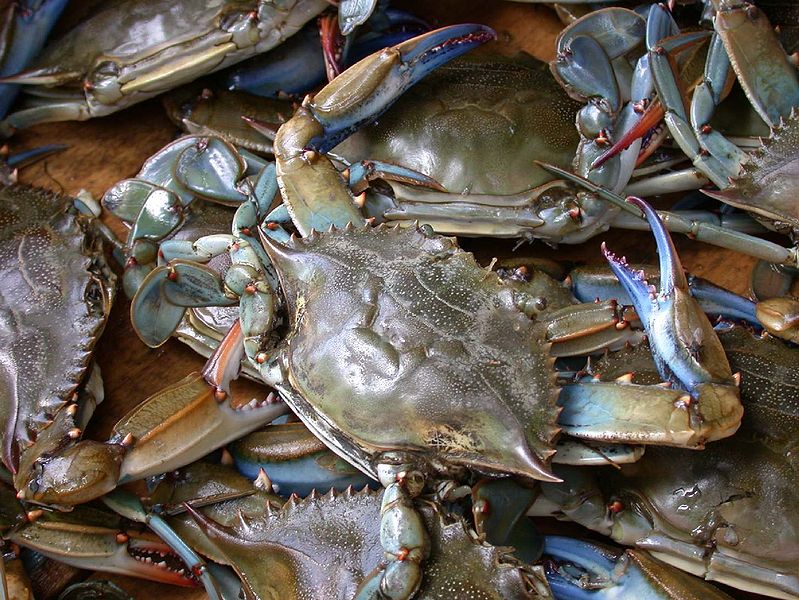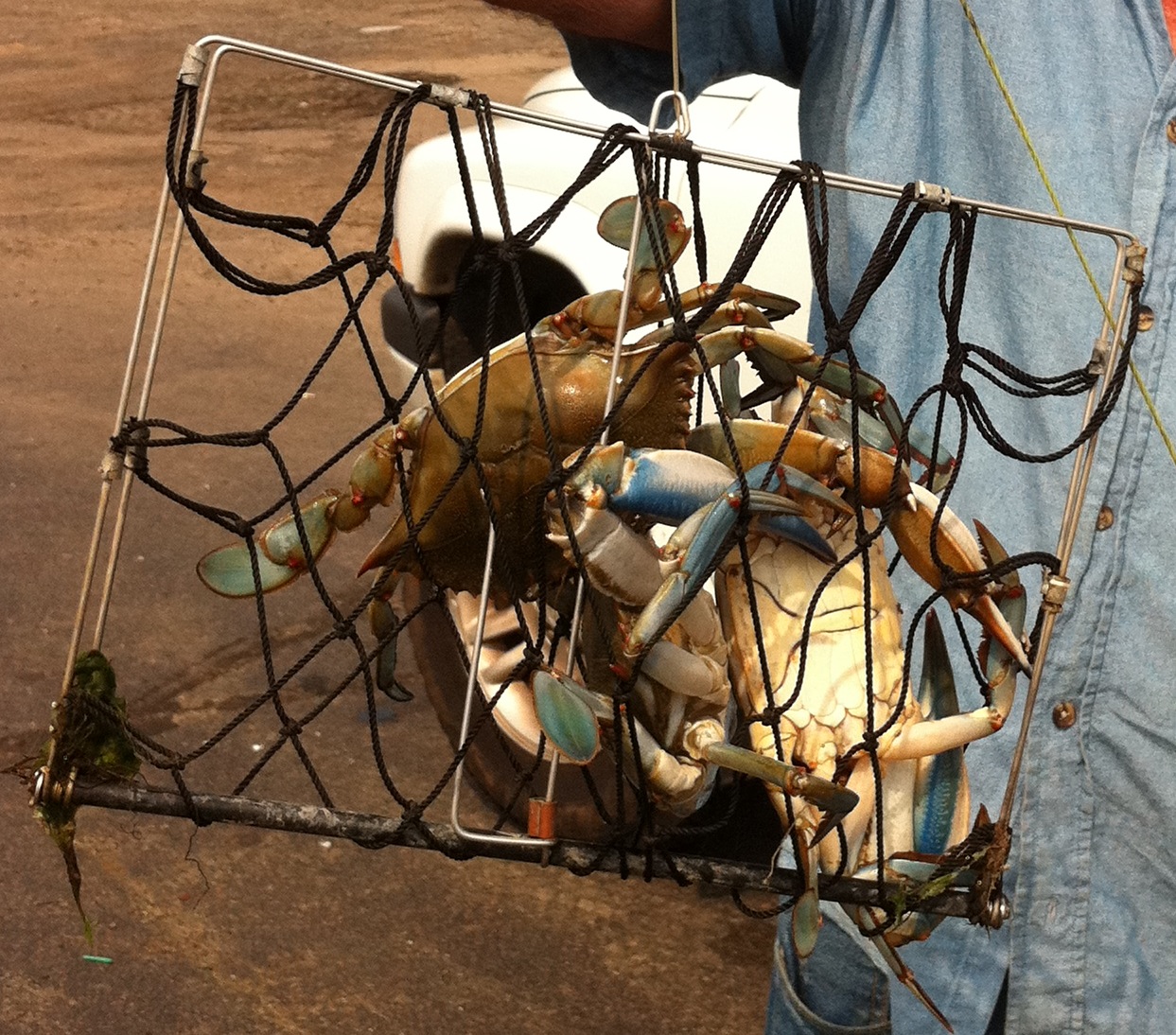A sea critter so graceful, colorful and tasty, one has to wonder how it’s evolved into such a voracious hunter with an attitude that rivals the famous bluefish. Yet, the Callinectes sapidus, or the Atlantic blue crab, draws countless numbers of crabbers to Connecticut’s tidal rivers hoping to outwit this cunning crustacean using a wide array of implements such as traps, scoop/dip nets and throw lines.

Photo: Wikimedia Commons
Male blue crabs (called “jimmies”) and females (referred to as “sallies”) generally fall into a three year life cycle when they peak and then fall off. They “mud” or hibernate in the winter and come to life as summer temperatures warm the waterways, provided, of course, winter has not taken a toll. For best results, look for these critters during an ebbing (falling) mid-tide, slack low and bottom half of a flooding (rising) tide.
As crabbing season (May 1-November 30) progresses, one catches combinations of large males and molting females or soft shells. During the molt, it’s common to see paired “jimmies” and “sallies” on the pilings where the male protects his mate and assists in the removal of her old shell. Legal sizes are 5 inches point to point for hard shells and 3 1/2 inches for soft shells.
Commonly used baits are Atlantic menhaden (bunker) and chicken, although not many chickens are found swimming in the rivers. When scooping along the river banks and bridge abutments, bait is not necessary. Some of the best scooping is done in the evening with flashlights – legal in Connecticut. Traps are generally used off bridges, docks and small boats and throws/nets along banks.

Blue crab meat is succulent either steamed or boiled (seasoned to taste) but watch out for their quick slashing claws which, incidentally, are a great addition to your pasta sauce. Happy crabbing.
Today’s guest post is by Jerry “Captain” Morgan of Captain Morgan’s Bait & Tackle. You can read more about his sea adventures at www.captainmorgan-fish.blogspot.com.
